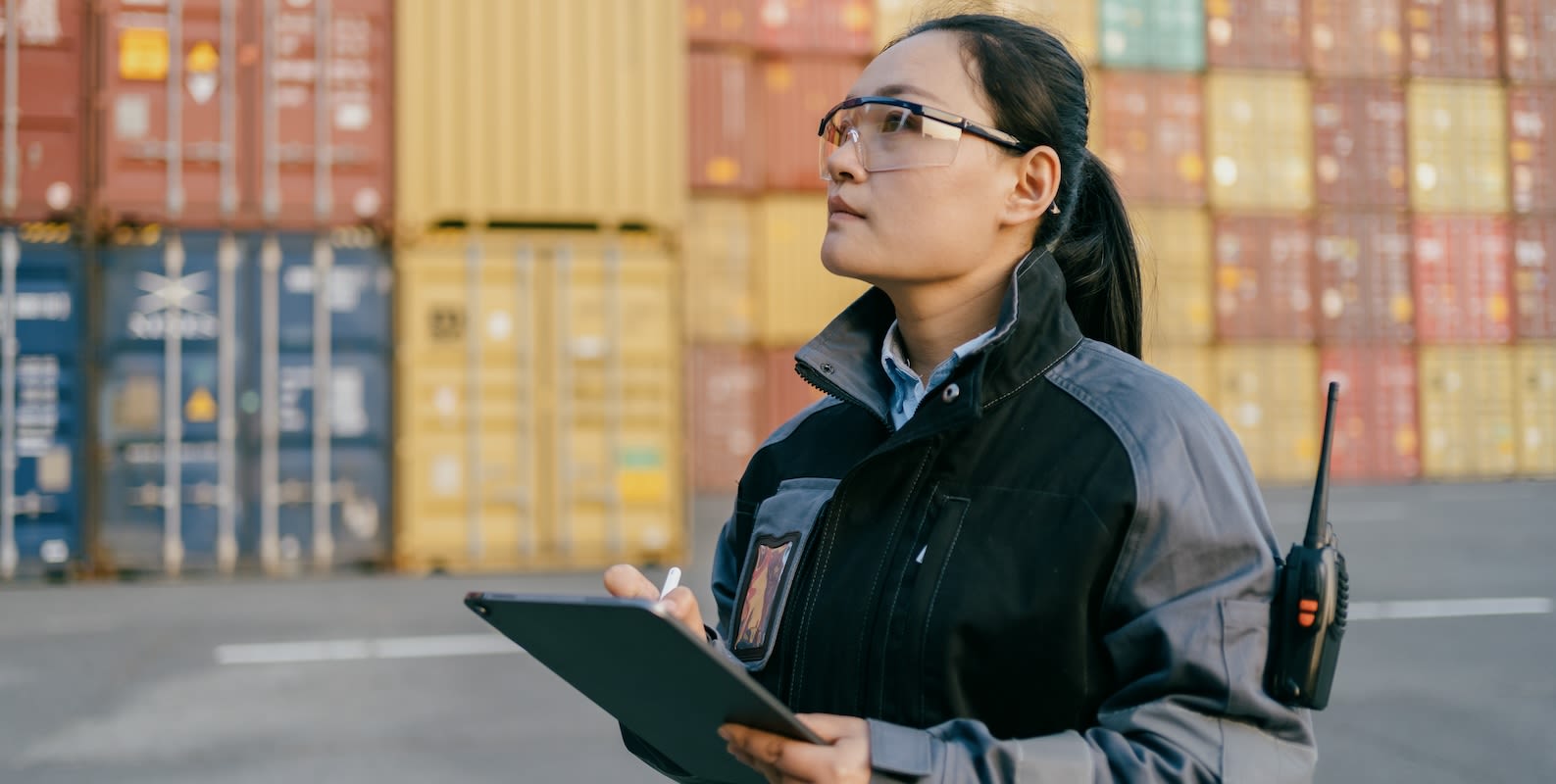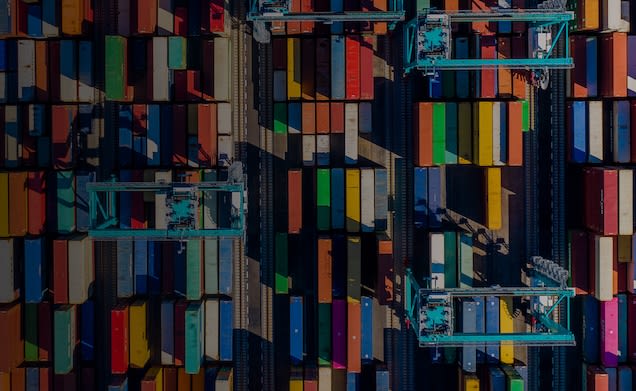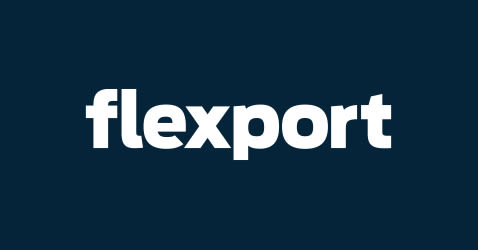
March 20, 2024
What Is a Supply Chain Control Tower and Why Require It in Your 2024 RFP?
Tags:
What Is a Supply Chain Control Tower and Why Require It in Your 2024 RFP?

March 20, 2024
What Is a Supply Chain Control Tower and Why Require It in Your 2024 RFP?
What do supply chains and international shipping businesses have in common? Both require end-to-end visibility to maximize efficiency.
A recent Supply Chain Resilience Report from Deloitte reveals that one of the key components of a resilient operation is end-to-end supply chain visibility, which is made up following:
- A control tower concept
- Digitization that enables transparency and process automation
- Improved insight into customer demand trends and improvements
- End-to-end embedded risk management
- Strong demand planning and forecasting
Supply chain visibility isn't possible without a supply chain control tower. In this article, we'll explore the concept further, and why it should be part of your 2024 Request for Proposal (RFP).
What Is a Control Tower?
In supply chain and logistics, a Control Tower is a concept that combines people, processes, data, and technology in one place to capture real-time operational insights used to inform enhanced visibility and improved decision-making. Working with multiple carriers, freight forwarders, and brokers isn’t easy. It becomes significantly easier if you put everything on one platform.
While the definition varies by person and industry, three fundamental characteristics are constant in any Control Tower:
- Operational excellence: Any international trade transaction between buyer and seller contains more than 16 handoffs. Establishing operational excellence comes from centralizing these transactions and creating enhanced visibility into trade management performance. With a control tower, a shipper can set overall standards and manage the end-view.
- Financial benefits: With better management of the overall supply chain, you can focus on managing exceptions and reduce the duties paid and cycle time, leading to improved cash flows.
- Efficiency gains: A control tower doesn’t only look at data, it looks at process flow. With all documents and data streamlined, you can better manage your customs broker, freight forwarder, and third-party networks. Facilitating more intelligent business decisions leads to faster cycle times for delivery and payment, and fewer exceptions. No information goes missing, no form is mistakenly not filled out.
What Processes Make Up a Control Tower?
The first step to setting up a control tower is to select the right freight forwarders, carriers, and brokers. No company works in every commodity base or trade lane, so this will require a diverse portfolio of partnerships. Flexport documents our customers’ requirements and conducts comprehensive forwarder and broker bids and evaluations to help make our customers make the right selections, with flexibility to work with existing or preferred client suppliers.
The next step involves establishing consistent business rules and implementing highly precise data management practices. At Flexport, we meticulously ingest and digitize freight, carrier, and broker data into our platform. This information must adhere to local country rules, regulations, and client-specific business rules to enhance compliance and early identification of exceptions. For example, when we ingest a commercial invoice and identify a discrepancy with the Harmonized Tariff Schedule (HTS) listed in the client's product library, we can then follow the standard operating procedure outlined in their business rules. This may involve overriding the data on the commercial invoice or escalating the issue accordingly.
It's important to note that Flexport's product library is dynamic, and allows the platform to ingest large volumes of data. Our platform can accommodate and store all relevant information and considers the unique characteristics and variations across different countries.
The next piece is issue resolution. With at least 16 entities handling your goods from end-to-end, there are often exceptions involving missing data, timeliness, or accuracy. In an ideal supply chain, data and information should come at specific time frames along the journey. You don’t want the goods to arrive before you have the commercial invoice - this can lead to storage and demurrage fees. A control tower offers real-time issue resolution during the freight forwarding and brokerage entry process through both online tools and direct interaction. We can identify where the mistake happened and fix the process so it doesn’t happen again.
All of this leads us to the final process of a control tower, audit and control. At Flexport, we have audit ability and control built into our platform with dates, time stamps, and tracked action logs. This gives you audit ability and reporting metrics to ensure standards, compliance, and minimize risk.
How Flexport’s Control Tower Solution Differs From Competitors
The Flexport Control Tower solution is designed to offer a cost-competitive, compliant, and seamless global solution, ensuring operational efficiency without disruptions in service quality. As your platform for international trade, we offer a common shipping process from anywhere to anywhere.
What strategic control tower solutions are available at Flexport?
- Vendor-Neutral Approach. We work with multiple service providers, including customs brokers, freight forwarders, and 3PL providers with the flexibility to adhere to the client's preferred suppliers.
- Supplier Selection and Management. Flexport assists in identifying new regional freight forwarders and brokers, manages the selection processes, and provides ongoing broker and freight forwarder management. The final selection involves collaboration between Flexport and the customer based on cost, quality, cycle time, and customer satisfaction.
- Continuous Communication. We establish service-level agreements with freight forwarders and brokers for daily management of compliant transactions and deploy an integrated quality operating system for continuous improvement.
- Routine Audits. Flexport routinely performs audits to ensure compliance and accuracy of information. Identified issues are addressed in collaboration with the client’s supply chain partners to implement necessary improvements.
We strive to make the data and information management experience as efficient and simple as possible for customers. Beyond transaction processing, Flexport aims to provide a reliable, efficient, and compliant service. While we have a menu of services and solutions that you can pick and choose from, the platform remains the same and is the conduit that allows you to get as much as possible out of your supply chain.
About the Author

March 20, 2024





